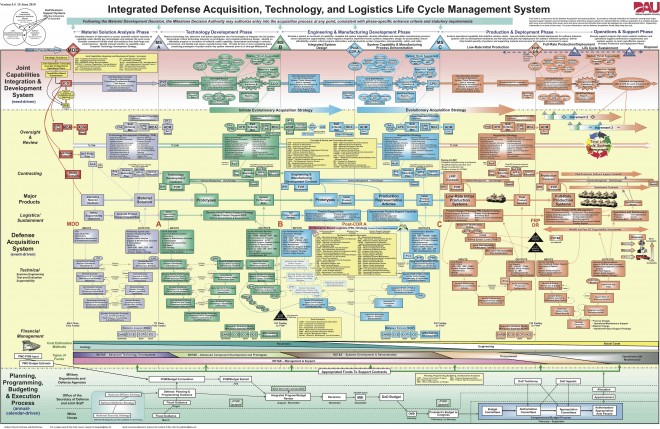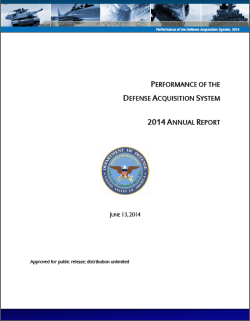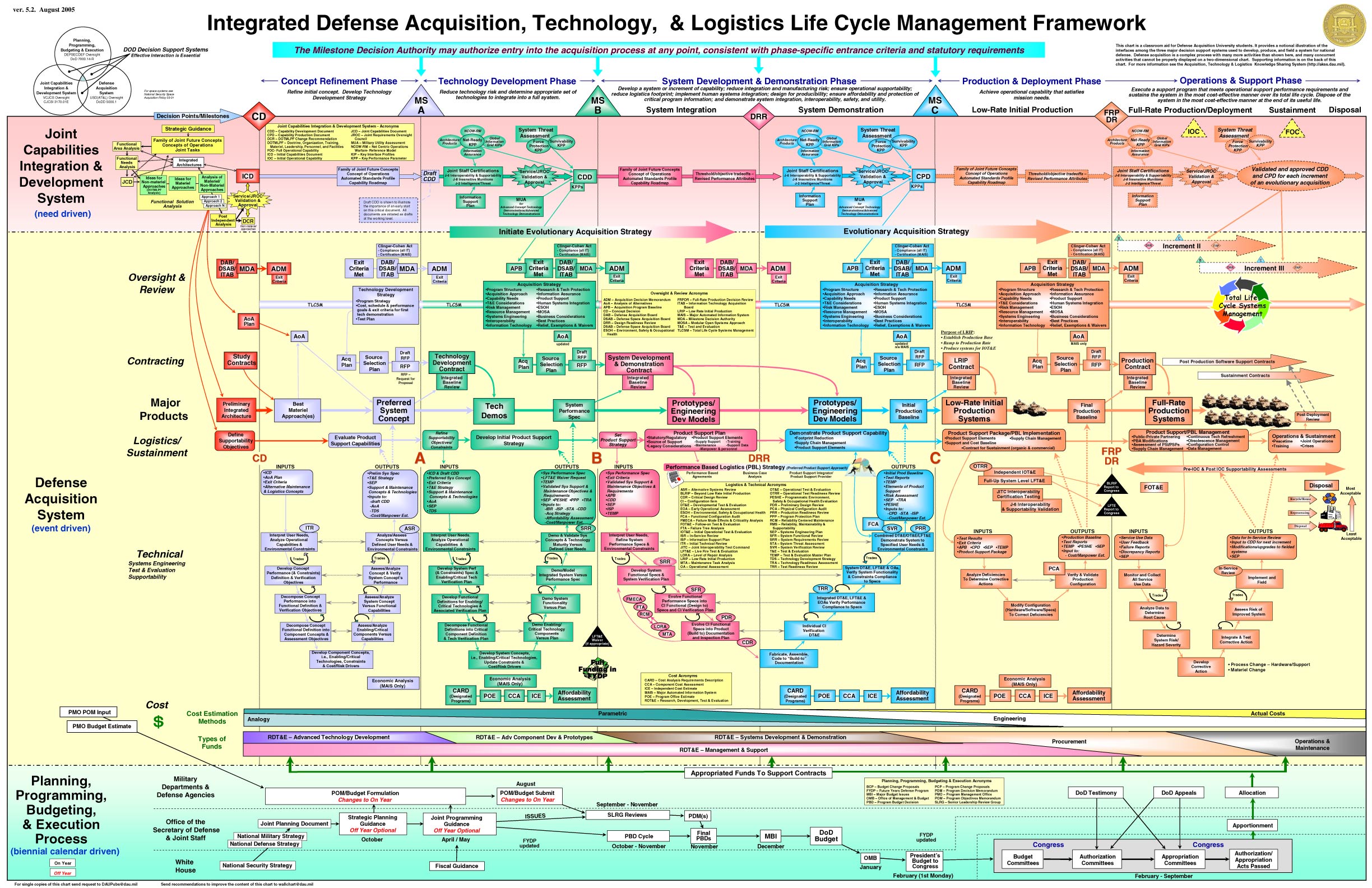I have written about the Navy’s Littoral Combat Ship kerfuffle before. The recent “non-decision” by outgoing SECDEF Hagel concerning the fate of the LCS fleet has prompted me to write again on the subject. For those you you who haven’t followed this “crisis of our own making,” my previous musing, Rethinking LCS, provides some background which I will not repeat here. But I know it’s a hassle to click on the link, so here’s the Cliff Notes version:
- LCS concept was for affordable, brown water vessel with modular capabilities to fulfill the presence mission in key locations around the globe.
- LCS modular concept meant that not all missions could be done at once, keeping costs lower and enhancing adaptability for new missions.
- LCS was not designed as a front-line warship, bristling with armament, but was configured to protect itself in most likely operating areas.
- Navy bought two designs, hoping to down-select, but alas, since the only decisions that are generally (or admirably, if you prefer in this case) made in the Pentagon are pre-decided, the decision was made to not decide and buy both forever.
- Elements in DoD leadership decided LCS didn’t have enough firepower and was vulnerable and directed the Navy to explore alternatives.
- Navy commissioned a big study to scratch the OSD itch.
- All breathlessly awaited the Uber-SECRET study results, knowing the Unter-SECRET answer: Navy can’t afford anything else…….(shhhhhhhh don’t tell anyone!!!!!!)
I found these slides in an article by the US Naval Institute and they are attributed to the US Navy, however I couldn’t find them on the Navy website.
So that brings us to the big pre-made decision by SECDEF, after consulting, conferring and otherwise hobnobbing with the Pentagon cognoscenti. (Who are the cognoscenti you ask? Read SECDEF’s statement and find out.) And the decision was:
……stay with two LCS designs, bump them up a bit (maybe $53 or $61 Mil or so) and move on. I think the only one surprised by the answer may have been SECDEF himself! Otherwise, why bother? I shudder to think about the amount of money and time spent on this study which had only one answer. I haven’t seen the actual study, but from what I’ve read about it, no stone was left unturned (apparently 192 stones to be exact). Option after option considered, analyzed, pondered, etc……..by those who already knew there was only one answer……we can’t afford anything else, nor can we afford the time required to start the acquisition process all over again. The answer was pre-decided. My guess is most of the changes announced would have been made anyway.
These pre-decided decisions are common in the Pentagon, but all too often staffs are forced to do the kabuki dance to give an air of legitimacy to them. Those in disagreement get to say their peace and then dismissed as “having an input”, even though no one was really listening. I recall this vividly while working on budget end-game around the 2006 timeframe. The Service programmers (three star resource folks) would be herded down to OSD about an hour before SECDEF was to receive a decision briefing on an issue, shown the slides prepared for him and then dismissed. I barely had enough time to run back to the Vice Chief to brief him on what I had seen, let alone provide him with any analysis of what OSD had pre-decided. Of course, if the Vice Chief were to raise an objection during the SECDEF briefing, the OSD Poobahs would announce,” Your folks have seen this and nothing was said.”
to give an air of legitimacy to them. Those in disagreement get to say their peace and then dismissed as “having an input”, even though no one was really listening. I recall this vividly while working on budget end-game around the 2006 timeframe. The Service programmers (three star resource folks) would be herded down to OSD about an hour before SECDEF was to receive a decision briefing on an issue, shown the slides prepared for him and then dismissed. I barely had enough time to run back to the Vice Chief to brief him on what I had seen, let alone provide him with any analysis of what OSD had pre-decided. Of course, if the Vice Chief were to raise an objection during the SECDEF briefing, the OSD Poobahs would announce,” Your folks have seen this and nothing was said.”
The point of this little tirade is that we waste money on these types of exercises all the time. I think about all the good we could have done for our wounded warriors with the money we wasted on this study. I think about all the time consumed by some very smart people who could have been working on something really important…how to deal with sequestration, how to keep the technological edge, how to fix our broken nuclear infrastructure…and any number of other problems.
Why does the Pentagon continue to do this? I suggest it’s because they have an endless supply of people and money. No one pays for people, they just have them. No one has to justify the cost of doing such a study because cost is not an issue. If I had done that in my civilian P&L life, I would have been shown the door. I had to spend my money and time on things that mattered and contributed to the bottom line. Since there’s no bottom line at DoD, everything tends to become equally important. Once on the Joint Staff I remember a staff briefing one day when the two topics discussed were the reduction of the nuclear arsenal by 50% and the Joint Staff savings bond campaign. We spent the same amount of time on each…in the end it was decided we should brief the Deputy Director daily on the savings bond campaign and as needed for the nuclear issue.
I think we need a study on studies.




 It’s the world where everything is backwards….the name of the bizarro world planet is Htrae (so clever!) and the world is square. As I recall, it was featured occasionally in Superman comics in the 1960’s. One of the mottos in Bizarro World was ” Us do opposite of all earthly things.” Bizarro bonds were a hot item on Htrae because they were “guaranteed to lose money.” So I don’t think it’s a huge stretch to make the analogy here.
It’s the world where everything is backwards….the name of the bizarro world planet is Htrae (so clever!) and the world is square. As I recall, it was featured occasionally in Superman comics in the 1960’s. One of the mottos in Bizarro World was ” Us do opposite of all earthly things.” Bizarro bonds were a hot item on Htrae because they were “guaranteed to lose money.” So I don’t think it’s a huge stretch to make the analogy here. A few days after the decision was made, the staff came back and noted that since we slid the ship a year, it’s going to cost more…..I don’t remember how much, but it was around $100 Million or so. “Really?” I commented. ‘Oh, yes,” came the reply, ” money will cost more the next year, we have shipyard loading issues that we will have to pay for, the cost of steel is going up, blah, blah blah.” So I began to understand that the economics of shipbuilding were different. I formulated The Shipbuilding Entropy Rule: “Nothing ever costs less. NO matter what you do, it will always cost more.” You buy less, they cost more. You cancel the buy, you still have to pay the overhead. You remove capability, it costs more to redo drawings. Its all very counter-intuitive. This became very clear to me during the following year’s budget build when the staff came back and said “We made a mistake. We have to move the LMSR back to the original purchase year.” “Fine,” I replied, “No harm, no foul.” Sensing it wasn’t “Fine“, based on the furtive glances between the staffers (an admiral sees a lot of those looks in the Pentagon) I asked “What’s wrong?” Turns out, if we moved the ship back into the original purchase year, it added another $100 Million to the cost! Whadakknow? We essentially did nothing and paid $200 Million not to do it! That, my friends, is Bizarro accounting!
A few days after the decision was made, the staff came back and noted that since we slid the ship a year, it’s going to cost more…..I don’t remember how much, but it was around $100 Million or so. “Really?” I commented. ‘Oh, yes,” came the reply, ” money will cost more the next year, we have shipyard loading issues that we will have to pay for, the cost of steel is going up, blah, blah blah.” So I began to understand that the economics of shipbuilding were different. I formulated The Shipbuilding Entropy Rule: “Nothing ever costs less. NO matter what you do, it will always cost more.” You buy less, they cost more. You cancel the buy, you still have to pay the overhead. You remove capability, it costs more to redo drawings. Its all very counter-intuitive. This became very clear to me during the following year’s budget build when the staff came back and said “We made a mistake. We have to move the LMSR back to the original purchase year.” “Fine,” I replied, “No harm, no foul.” Sensing it wasn’t “Fine“, based on the furtive glances between the staffers (an admiral sees a lot of those looks in the Pentagon) I asked “What’s wrong?” Turns out, if we moved the ship back into the original purchase year, it added another $100 Million to the cost! Whadakknow? We essentially did nothing and paid $200 Million not to do it! That, my friends, is Bizarro accounting! They became so expensive and the requirements bounced around so much, we began advertising it as a fire support ship vital to the survival of the Marines during amphibious assaults. As such, we only needed about 10-12, just enough to support the number of amphibious ready groups (ARGS) we had at the time. The Marines were happy about that, even though they preferred to have 2 per ARG. I even went over to the Hill with my Marine counterpart extolling the virtues of the DDG-21 as the perfect fire support ship for the Marines. But once the Marines realized that the cost of the ship was so high that it would probably limit the amount of other stuff they could buy, they dropped it like a hot potato…..they would much rather have the 360 V-22’s than 24 DD(X)’s. So in the space of about a month we changed our tune from”vital” to “not so vital.” Now that they are $3 Billion a copy, we are only building 3 of them and I’m not sure there’s a real requirement out there. As my Grandmother said when she got her first taste of champagne in one of those dinky champagne flutes at my son’s baptism, “That’s not enough to wet my whistle.” So it is with DDG-1000 IMHO. The real requirement as far as I can tell is to have something for Bath Iron Works to build ( they will build all three) so they can stay in business in order to address industrial base concerns. Hence the title of the article.
They became so expensive and the requirements bounced around so much, we began advertising it as a fire support ship vital to the survival of the Marines during amphibious assaults. As such, we only needed about 10-12, just enough to support the number of amphibious ready groups (ARGS) we had at the time. The Marines were happy about that, even though they preferred to have 2 per ARG. I even went over to the Hill with my Marine counterpart extolling the virtues of the DDG-21 as the perfect fire support ship for the Marines. But once the Marines realized that the cost of the ship was so high that it would probably limit the amount of other stuff they could buy, they dropped it like a hot potato…..they would much rather have the 360 V-22’s than 24 DD(X)’s. So in the space of about a month we changed our tune from”vital” to “not so vital.” Now that they are $3 Billion a copy, we are only building 3 of them and I’m not sure there’s a real requirement out there. As my Grandmother said when she got her first taste of champagne in one of those dinky champagne flutes at my son’s baptism, “That’s not enough to wet my whistle.” So it is with DDG-1000 IMHO. The real requirement as far as I can tell is to have something for Bath Iron Works to build ( they will build all three) so they can stay in business in order to address industrial base concerns. Hence the title of the article. Second was the publishing of a report by the Senate Permanent Subcommittee on Investigations, Chaired by Senator Levin, with Senator McCain as the Ranking Member. The report, entitled “
Second was the publishing of a report by the Senate Permanent Subcommittee on Investigations, Chaired by Senator Levin, with Senator McCain as the Ranking Member. The report, entitled “ I’m not surprised at that because given the irrational focus of DoD on vendor profits, they have managed to make bidding on defense contracts so unattractive that fewer and fewer companies are making the effort to bid. In my view, it’s not just one reason:
I’m not surprised at that because given the irrational focus of DoD on vendor profits, they have managed to make bidding on defense contracts so unattractive that fewer and fewer companies are making the effort to bid. In my view, it’s not just one reason:
 I was prompted to look at it when I saw
I was prompted to look at it when I saw 